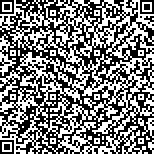| 摘要: |
| 为揭示虎龙杂交斑(Epinephelus fuscoguttatus♀×E. lanceolatus♂)和斜带石斑鱼(Epinephelus coioides)肠道微生物群落的结构及功能差异, 利用16S rDNA高通量测序技术对其肠道微生物群落进行分析。结果表明: (1) 虎龙杂交斑肠道微生物群落以变形菌门(Proteobacteria)、厚壁菌门(Firmicutes)和放线菌门(Actinobacteria)为主, 斜带石斑鱼中以变形菌门、梭杆菌门(Fusobacteria)和厚壁菌门为主。(2) 在属水平, 虎龙杂交斑和斜带石斑鱼肠道中均含有高丰度的弧菌属(Vibrio)。鲸杆菌属(Cetobacterium)、发光杆菌属(Photobacterium)和丙酸菌属(Propionigenium)是斜带石斑鱼肠道中的标志微生物, 而虎龙杂交斑肠道中的标志微生物为棒状杆菌属1 (Corynebacterium 1)、变形杆菌属(Proteus)、葡萄球菌属(Staphylococcus)和类香菌属(Myroides)。(3) 网络分析显示, 变形菌门在两种石斑鱼肠道中均占主导地位。(4) 功能预测表明, 虎龙杂交斑肠道微生物群落中抗坏血酸与糖醛酸代谢、植物-病原体相互作用和胰岛素信号通路显著高于斜带石斑鱼, 斜带石斑鱼肠道微生物群落的功能在万古霉素类抗生素和链霉素生物合成、亚油酸代谢、双酚降解以及类黄酮生物合成的相关途径中显著富集。研究结果有望加深对石斑鱼肠道微生物群落的认识, 为选择合适的石斑鱼养殖品种, 提高石斑鱼养殖产业的经济效益提供科学参考。 |
| 关键词: 虎龙杂交斑(Epinephelus fuscoguttatus♀×E. lanceolatus♂) 斜带石斑鱼(Epinephelus coioides) 肠道微生物 物种特异性 代谢功能 |
| DOI:10.11693/hyhz20230900190 |
| 分类号: |
| 基金项目:广东省科技计划项目,2019B030316022号;2022年广东省乡村振兴战略专项资金,2022-SPY-00-017号;2023年乡村振兴战略专项,粤财预[2023]6号;2022~2023年国家级大学生创新创业训练计划项目,202211078124号;广州大学“2+5”平台资金资助。 |
|
| COMPARISON OF INTESTINAL MICROBIAL COMMUNITY STRUCTURE AND PREDICTIVE METABOLIC FUNCTION OF TWO IMPORTANT ECONOMIC GROUPERS |
|
DU Qian-Ping1, XIE Guang-Ting1, ZHONG Zhong-Xuan1, ZHANG Ming-Qing1,2, WU Jin-Hui3, SHU Hu1
|
|
1.School of Life Sciences, Guangzhou University, Guangzhou 510006, China;2.School of Life Sciences, Sun Yat-Sen University, Guangzhou 510275, China;3.Guangdong Province General Station for Agriculture Technology Extension, Huizhou 516081, China
|
| Abstract: |
| In this study, the hybrid grouper (Epinephelus fuscoguttatus♀×E. lanceolatus♂) and orange-spotted grouper (Epinephelus coioides), important breeds in the grouper culture industry with high economic value, were selected to determine differences in the composition and function of their intestinal microbiota using 16S rDNA high-throughput sequencing. Hybrid grouper intestinal microbiota mainly comprised Proteobacteria, Firmicutes, and Actinobacteria, whereas Proteobacteria, Fusobacteria, and Firmicutes were predominant in the orange-spotted grouper. Both breeds had a high abundance of Vibrio at the genus level in their guts. In addition, orange-spotted grouper and hybrid grouper intestinal marker bacteria included Cetobacterium,Photobacterium, and Propionigenium and Corynebacterium 1, Proteus,Staphylococcus, and Myroides, respectively. Network analysis revealed that Proteobacteria predominated the microbial network in the guts of the two grouper species. Functional prediction showed that ascorbate and aldarate metabolism, plant-pathogen interactions, and insulin signaling pathways were significantly higher in hybrid grouper gut microbiota. The intestinal microbiota of the orange-spotted grouper was significantly enriched in pathways related to vancomycin group antibiotic and streptomycin biosynthesis, linoleic acid metabolism, bisphenol degradation, and flavonoid biosynthesis. This study will deepen the understanding of grouper gut microflora and provide a reference for selecting suitable grouper culture species to improve the economic benefits of the grouper culture industry. |
| Key words: Epinephelus fuscoguttatus♀×E. lanceolatus♂ Epinephelus coioides gut microbes species specificity metabolic function |
